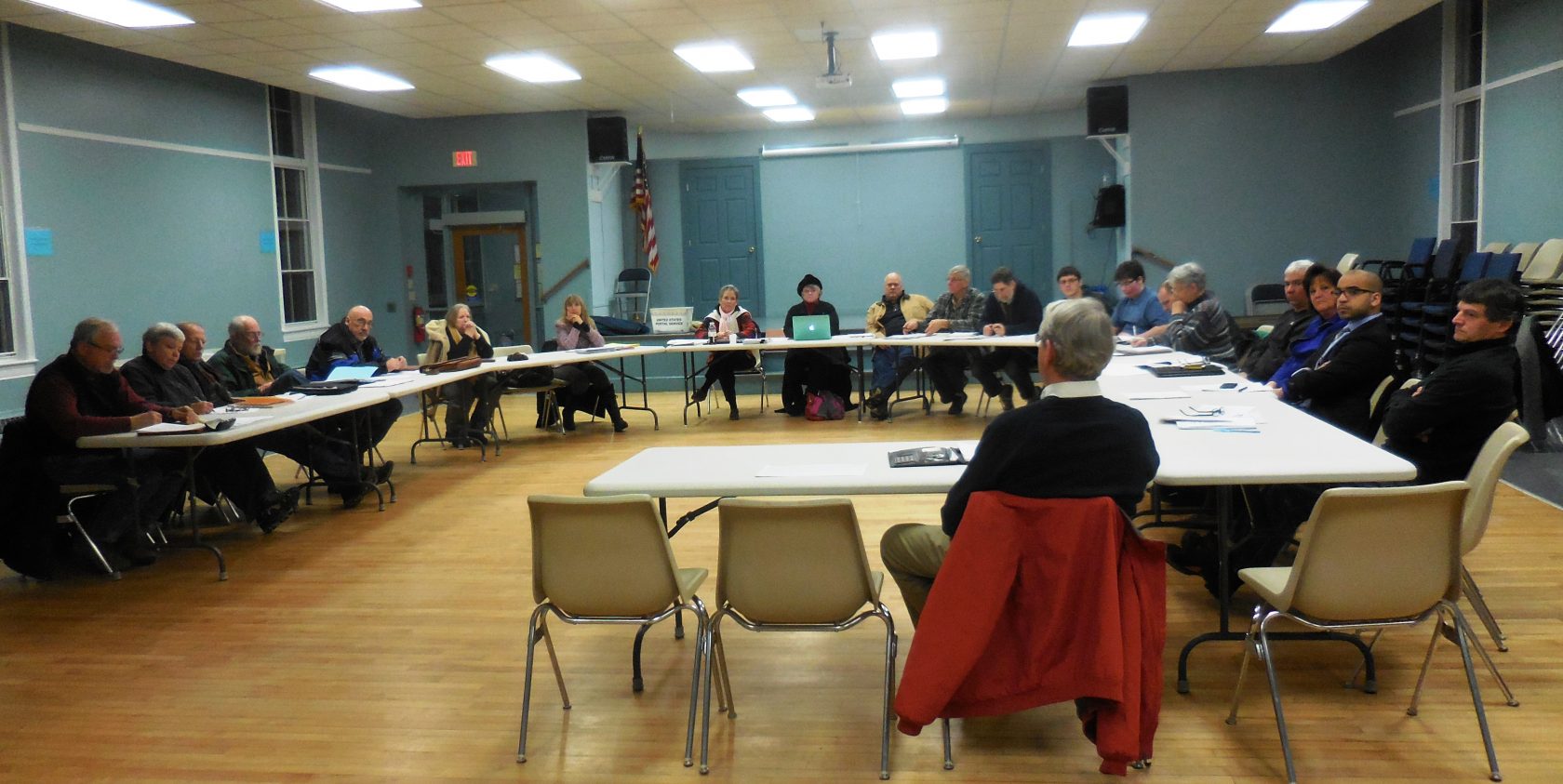HUNTINGTON – Twenty people from Gateway district town governments, businesses and the schools gathered at Stanton Hall on Thursday for the Gateway Task Force to look at this year’s bottom lines in advance of budget approvals at town meetings.
Due to word last week of the dismissal of the lawsuit over Worthington’s withdrawal, Gateway’s current FY16 budget is $100,000 short, and another $84,000 will have to be added to the FY17 budget. The current draft has a total assessment to the towns that is $189,671 more than FY16, even though the bottom line of the budget is $426,000 less. While the overall increase in assessments is 2.11 percent, the percentage owed by each town is determined by the school population. Therefore, this year, the assessments range from a 6.63 percent decrease in the assessment to Montgomery, to a 5.4 percent increase to Huntington.
Among the factors for the increase in assessments, besides the withdrawal of Worthington for which the district received $630,000 in one-time mitigation funds this year, is an anticipated 20 percent increase in transportation costs. The increase is due to a new contract with Lecrenski Bros., which Gateway business manager Stephanie Fisk called “the only game in town.”
“We did a three-year bid and then two years of renewals to keep the price low. This year, it will go up 24 percent,” Superintendent David B. Hopson said. Although the bidding was open, no other companies were interested.
“If the state would only fund regional transportation as they promised a long time ago, that would go a long way to help the district,” said task force co-moderator Darlene McVeigh of Huntington.
McVeigh and other officials spoke about the increases in taxes in their towns this year, which they said ranged from about 4 to 7 percent. Most of the officials said they could not afford to increase their budgets beyond the 2 ½ percent allowed under Proposition 2 ½.
Andy Myers, representing Chester, said his town faces the same issues as all of the other towns, and the town’s taxes went up to a tax rate of 20.6 percent, among the highest in the state.
“We need the school to help us as well,” Myers said. “We’d like to request level funding of town assessments this year.”
Tony van Werkhooven of Blandford, who serves on the Finance Committee, said Blandford’s tax rate increased by 6.1 percent this year.
“All we can do is go up 2.5 percent,” he said. “Within the 2.5 percnent, we can afford to do 1.2 percent increase of assessment.”
McVeigh, speaking for Huntington, said that the increase for the town in the FY17 school budget draft is $90,000 over what was voted last year, and still exceeds 2 ½ percent.
“If you’re talking now an almost 3 percent increase, I don’t know where we’ll go,” McVeigh said. She said they could get creative and use some free cash, but fall short of the state’s recommendation of 5 percent free cash in town budgets. She said Huntington just learned that the health insurance is going up 8.9 prcent, as well as contributions for retirement. They have already agreed to no raises for elected officials and tiering of other employees.
“We have to talk about equipment and what needs to be replaced,” she said. “If we could keep it at what the town had approved last year that would be ideal.”
“You can’t keep having taxes going up and down and up and down,” she said, adding it is too hard on the residents.
“I would like the school to consider a 10-15 percent reduction in administrative salaries,” van Werkhooven said.
“We’ve cut administrative staff and added to their work load,” Hopson responded. He said the administrative staff is the only group of employees besides non-union who have taken unpaid furlough days, and they haven’t had a raise for a number of years.
“The reality is, if you want to cut $270,000 more, it’s got to come from teachers,” Hopson said. “If you want to cut administrative salaries, you’ll have to find new administrators.”
One positive outcome of the work of the Task force in recent months has been the signing on of the Select Boards in all the towns to a proposed joint Community Compact agreement with the state. The Community Compact opens up funding and assistance from state government to look at shared services and other joint ventures.
“I’m very encouraged that the Community Compact model is moving forward,” said Myers. “It’s a way for towns to work together to look at best practices and shared services. We could save hundreds of thousands if not millions of dollars if we could work together,” Myers said.


